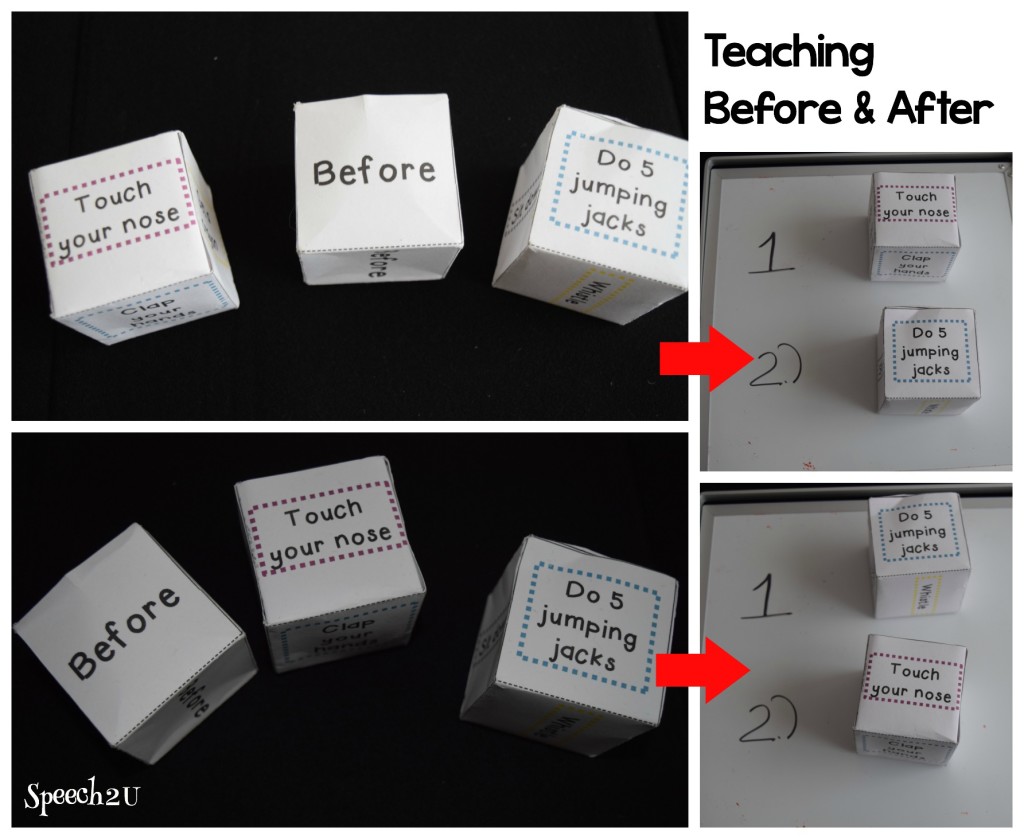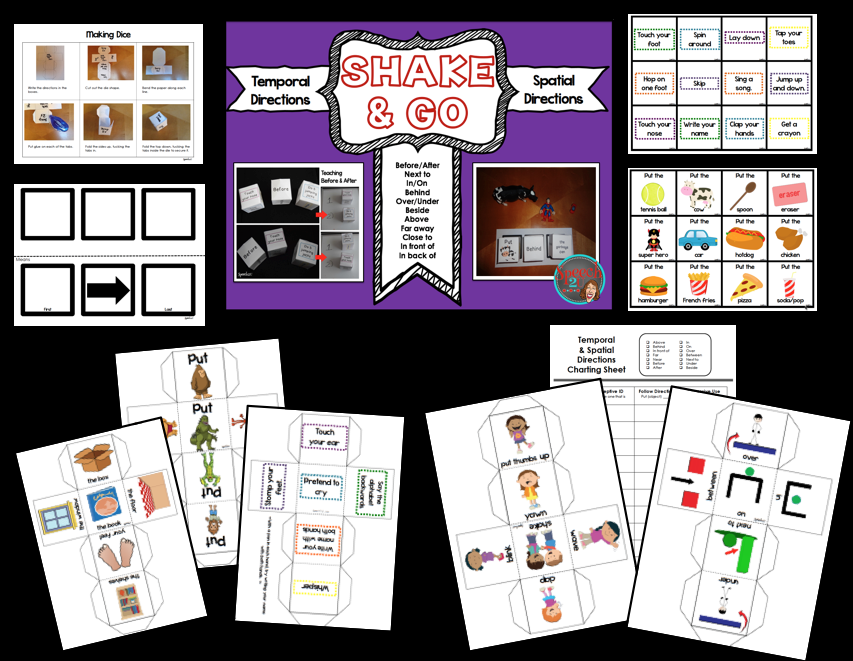Are you ready to hear about my tips for teaching before and after? I am always thinking about how to best teach concepts-how to make what I am doing is not only evidence based but it is effective. I have a few clients who need to work on temporal directions such as before/after.
Teach Before and After with sets of directions
Choose two motivating directions and alternate using before/after to help teach the contrast. For example, I used a ramp toy, cars and a spray bottle.

I used the following 2 directions:
- Spray the car.
- Push the car down the ramp.
I prompted for these directions:
- Before you spray the car, push it down the ramp.
- Spray the car before you push it down the ramp.
- Before you push the car down the ramp, spray it.
- Push the card down the ramp before you spray it.
By using the same direction, I am able to teach how the location of the concept “before” changes the meaning of the direction.
Manipulating pictures

Another way to teach this skill is to physically manipulate the order of the direction. I start by writing each direction on a sticky note so we can manipulate the order. I also write down the concept. Once I’ve said the direction, I can show the student how to put the direction in order.
To make it more motivating, I made a set of paper dice that we could roll and then put in order to complete our directions. You can make a set of your own by using these instructions from First Palette.
No time to create your own materials? Check out my Direction Dice activity on Teacher’s Pay Teachers. I just updated it with over 20 new dice templates-including pictures for non readers!

Use functional activities
Once you’ve taught the concept, I like to practice them within functional activities: making snacks, crafts, or familiar routines such as toothbrushing. This is how I start to work on generalization. For example:
- Before you brush your teeth, put the paste on the brush.
- Before your spread butter on the bread, put it in the toaster.
- Get the jelly before you put the bread in the toaster.
- Put the pink bead on the bracelet before you add the yellow bead.
Play with unexpected directions
Within routines, it is sometimes easier to follow multi-step directions because they are related. (ex. Before you get a cup, open the cupboard). I probe for generalization of skill by alternating these directions with something that is unexpected. (ex. Before you get a cup, turn around or Open the cupboard after you fall down.) Are they able to follow the directions when the context doesn’t make sense?


This is awesome! Thanks for taking the time to share theses ideas. What age would you begin working on this skill?
I’m so glad you found it helpful. I think preschoolers are starting to understand concepts like before and after. Since I work with language delayed children, I might wait until kindergarten to target this skill directly but might begin modeling the concepts earlier as we use them so frequently.